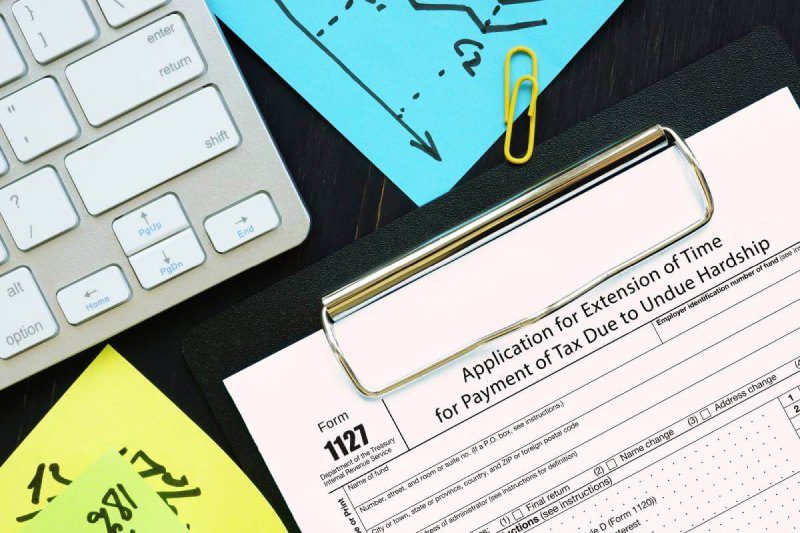
Did you experience any good April Fool’s jokes this week? I always love to hear about a good prank.
Here’s one that’s actually not a joke (sorry)… We’re in the final stretch leading up to the April 15th personal filing deadline.
It’s our Game 7 around here, and we’re working our tails off for you and all our Redding clients.
Despite the frenzy of getting things in by Tax Day, I’m still taking the time to write to you, my friend, because this weekly connection with you matters. If you have all your papers in, and are waiting for us — fear not — the Dennis Fritz CPA team is hard at work, even as I type…
Oh, and if for some reason you haven’t done ANYTHING with your taxes yet, it’s actually not too late… but also… Get on it!
Keep in mind: This is often our busiest time of the year (so please be understanding), and it’s also the week when a barrage of questions about filing an IRS tax extension and payment options rolls in like clockwork.
Other April 15th deadlines:
1) First quarter estimated taxes are due.
2) Last day for IRA or Roth IRA 2023 contributions.
3) Last day to max out contributions for your 2023 HSA (Health Savings Account).
Grab a time to get in before the deadline (we’ll do our best to squeeze you in) for any of the above:
Now, because it’s most likely that you’ll be needing to file an IRS tax extension at this point, let me answer some questions you might have about extensions. And, because a lot of people can’t pay what they owe in a 2-week window, let’s also discuss payment options…
Dennis Fritz’s Guide to Filing an IRS Tax Extension
“If you spend too much time thinking about a thing, you’ll never get it done.” – Bruce Lee
As you or any of my Redding clients well know, Monday, April 15th is the filing deadline for a federal tax return (except those in federally-declared disaster areas). But, perhaps you’re needing more time to get your 2023 taxes filed. If so, then filing an IRS tax extension is going to be your next option — due by end-of-day on the 15th.
The great thing about filing an IRS tax extension is that it automatically gives you six extra months to file if it’s approved — and they usually are. This would put your 1040 return due date at October 15.
REMEMBER: More time to file doesn’t mean more time to pay if you end up owing. An extension just gives you more time to get things together so you can get your paperwork to the IRS. If you owe more than what you paid with your estimate, you’ll be accumulating penalties and interest on the difference – so PLEASE don’t take the entire six months to do this!
When you’re applying for an “Extension of Time to File” with the IRS, you’ll want to make an educated guess about your tax liability (aka what you’ll owe). Don’t just randomly choose a figure. Instead, sift through your receipts and tax documents to organize them a little bit.
Once that’s done, calculate your income and expenses to come up with a rough estimate of what you owe to the government. Remember, this figure is just an ESTIMATE. At the point of requesting the extension, you’ll need to pay the amount you’ve estimated as owed.
This entire process can be handled electronically (we’re happy to help you on this front), or you can opt to file it online yourself and make your estimated payment online as well.
But you might say, What if I can’t pay? If that’s the case, here are your options:
1) Whatever you can pay right now, go ahead and do it. It’s a sign of good faith to the IRS.
2) Ask for more time to pay: https://www.irs.gov/taxtopics/tc202.html. Those who make this request will often get it, and then you’ll have 120 extra days to pay. BUT… it does mean you’ll have to call the IRS… and will still owe penalties and interest. 🙁
3) If the reason you can’t pay is because you wouldn’t have enough money for groceries and your mortgage/rent, then you can request a “Financial hardship” delay. Unfortunately, you’ll still end up with interest and penalties added to what you owe, but it’s better to let the IRS know your situation rather than ignore the bill.
4) If you owe 50K or less in combined taxes, penalties, and interest, and are up-to-date with your tax filings, you might qualify for a 72-month installment payment plan with the IRS. To apply for an installment plan, go here: https://www.irs.gov/Individuals/Online-Payment-Agreement-Application
Keep in mind, interest and penalties accrue until the debt is fully paid. And, let me strongly urge you to get a time on my calendar so I can help guide you on this.
5) Negotiate with the IRS. I don’t recommend trying this on your own. The IRS is pretty firm about getting what it wants, and they don’t often hand out “Offers in Compromise.” So, a strong knowledge of how the system works will matter in this type of interaction.
6) Using other sources of credit like your credit card or a private loan. I don’t recommend this route. It’s something other Shasta County tax advisors might offer as a solution, but overall, it’s not a good idea to pile debt on debt. If you’ve tried #1-5, then what about this…
7) Sell. There are things you don’t need anymore and could get you some extra cash. Plus, you’ll be checking something to clean off your spring cleaning list.
Though I just threw a lot at you, I hope it will be helpful for you in facing the upcoming deadline.
But no matter what…
We’re in your corner,
Dennis Fritz



